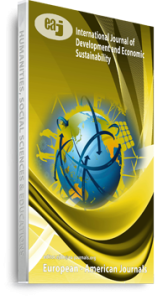Angus Maddison (Former Member of OECD) in his article “What is Education For” published in Lloyds Bank Review describes the major purpose of education as to provide opportunities for self-fulfilment and personal development – a more complex process with humans than with animals because of the vast stock of knowledge we have accumulated. Access to this heritage is a basic human right which should yield satisfaction throughout life. “Education is designed to produce existing knowledge in new minds and to make these minds more receptive and more capable of absorbing, transforming, creating and using knowledge, Research and Development, meanwhile, is designed to produce new knowledge. This crucial segment of the knowledge industry sustains a two-way link between successful investment, which permits the faster growth of GNP, and GNP growth, which permits more investment in knowledge production” (Burke, Willam 1966). That education adds to the productivity and earning power of the individual and can raise a nation’s level of GNP has long been recognised. However, implications of treating investment in human capital, analogues to that in physical capital is the story of past fifty years. The basis of the argument is the empirical evidences. According to Brookings institutions’ Edward Denison, knowledge investment accounted for about 40 per cent of the 2.9 per cent annual rate of growth in the 1929-1957 period. Denison further estimates that the education of the labour force was responsible for 23 per cent of the growth in real national income in that period. The calculus of cost and benefits from investment in education of thirsty countries have shown education to have been a worthwhile investment and results have shown that further expansion of educational facilities is warranted in most countries, except at postgraduate level (Psacharopoulos , 1973). The ‘Chicago School’ of economists has been the first in developing a theory of human capital. These economists estimated the variations in earnings by education-standard as a measure of its economic benefit and they have used earnings and costs of education to calculate private and social rates of return from investment in education.
Keywords: : Human Capital, Investment, Private and Social Returns, Returns

